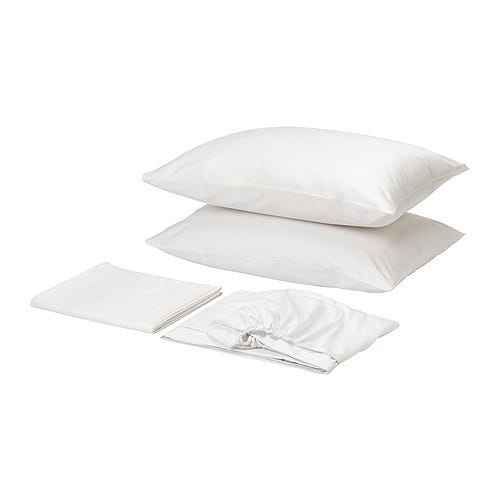So What, Who Cares (vol 2, issue 35) How discounters dragged Germany into local eating as a lifestyle
Hello! Let's see how well I manage this on a smartphone. Experiments are fun!
*

One way to train people to #eatlocal: Reposition it as the discount option. A fascinating NPR piece on Germany's tendency toward seasonal food festivals -- and overall seasonal eating as the norm -- gives credit to the country's 60-year history of shopping at food discounters who keep costs down by only stocking seasonal wares. Frankfurt-based retail analyst Denise Klug says, "[Discounters] have educated shoppers that they don't need all this choice."
(How pervasive is the discount-grocer culture in Germany? Two discount chains -- Aldi and Lidl -- command 40% of all grocery shopping with nearly 8,000 stores in Germany.)
That's a fairly stark contrast to how eating local is regarded in the U.S., where it can derided as geographically unrealistic (and elitist), culturally divisive, or ultimately destructive when turned hyperlocal.
So what? Not content with dominating Germany, discount grocery culture is going global. Aldi and Lidl are already pressuring big grocers in the U.K. to adapt some of their business practices in an effort to keep price-conscious consumers, even as Aldi and Lidl's combined market share is very small.
And Trader Joe's -- owned by a family trust set up by Aldi co-owner Theo Albrecht -- is following the German discounter model with fewer items (known as SKUs in the business), seasonal stock rotation, and deep discounts. It's working well in U.S. markets: Trader Joe's and Aldi's took the #1 and #3 rankings in a recent "favorite grocery store" survey. And they have big growth plans for the U.S.
Who cares? Grocers in the U.S. should. The model of "one big supermarket to meet all your needs" is on the way out: recent research shows that "traditional" grocery stores only have 34% of U.S. grocery dollars, and 75% of American grocery shoppers already hit multiple stores for their food, and they're bouncing between traditional grocers and deep discounters for eggs, meat, bread, dairy, vegetables and fruit.
It will be interesting to see which grocery chain will decide to try on a tightly-edited, seasonal assortment with the "Who doesn't love cheap brussels sprouts in January? With bacon!" approach.
*
Can the Everlane/Warby Parker model of "craft elegant basics and take them directly to the people" work when the retail category in question is not clothing, but home goods? Snowe aims to find out. Their new home line -- which distills goods into four basic categories of "Eat, Sleep, Drink, Bathe" -- debuted and was instantly labeled as something to aspire to "post-Ikea."

Aesthetically speaking, the brand is in line with Fish's Eddy, Brook Farm General Store, Kaufmann Mercantile -- "basics" which have the patina of Nice Things by virtue of the materials, a scrupulous attention to design, and/or an origin story invoking qualities like "heritage" and "authenticity." Snowe's entering a space that has been nicely defined by Shinola, which has built a luxury profile for itself over the past three years, solely on made-in-America watches, dog leashes and Bluetooth gramophone speakers.
Founder Rachel Cohen defines Snowe's approach -- and references the contention that experience is the new luxury -- with:
There is this convergence between the everyday and the formal, but why should things that are beautiful and high-quality be used just twice a year? What about your daily cup of coffee, or the glass of wine you have at the end of the day? These moments can use these quality products as well.
So what? American clothing retail is oversaturated right now (vol 2, issue 82). But the U.S. home goods market is expected to grow to $297 billion by 2023, and right now, online sales are estimated to account for only 6-7% of the money spent in the market. There is going to be a gold rush of companies looking to grab some of that money.
Who cares? Mass market retailers, because it can be lucrative to copy the look and feel of this "authentic" and small-batch luxury segment at a much more friendly price point.

Snowe is selling you a $265 white percale sheet set and betting you'll pay that much for a full-size set of sheets because they're 500-thread count and they come with a feel-ethical origin story. By contrast, a set of 310-thread count white sateen sheets at Ikea is $28. What happens when Ikea sees that people want to be reassured that their cotton sheets aren't poisoning the planet and being made by miserable sweatshop workers? They use their greatest asset, operational volume, to tweak the product. Then they raise the price $30, they stick a blurb on their website about the organic farming and joyous production of their sheets, and et voila, consumers have a feel-good product that is still a fraction of the Snowe price.
As Target can tell you, the masstige market is insatiable (vol 2, issue 32): You just have to identify the luxury signifier for a specific product. Mass market retailers can't compete on the experience of shopping (vol 2, issue 23), so they'll find another way to woo customers. Stay tuned for a lot more origin stories attached to your highball glasses and can openers.
*
Your pop culture note of the day: Dan Nosowitz is one of my favorite journalists working right now (see his stuff at Modern Farmer) and he just wrote a piece over at Atlas Obscura that is simply delightful: It's an origin story for the peculiar pop-punk accent that emerged in the 1990s and is still going strong, given the name "the California shift."
The piece is what good science writing should be: explanatory reporting placed in a wider cultural context. I love that the question "Why does the dude from Blink-182 say 'rehm' instead of 'room'?" has such a detailed answer.
(As to those of you who are all, "Exactly what does Blink-182 sound like?" I point you at their Christmas song, which is in heavy rotation on our holiday playlists after the preschooler's down for the night.)
*
Are there typos? I apologize in advance. The only editing class I did not get an A in was copyediting.
Did you miss an issue of So What, Who Cares? The archive is here. If you really like So What, Who Cares?, tell a friend to subscribe. And do not hesitate to hit me up via email or on Twitter. Thanks for reading!

